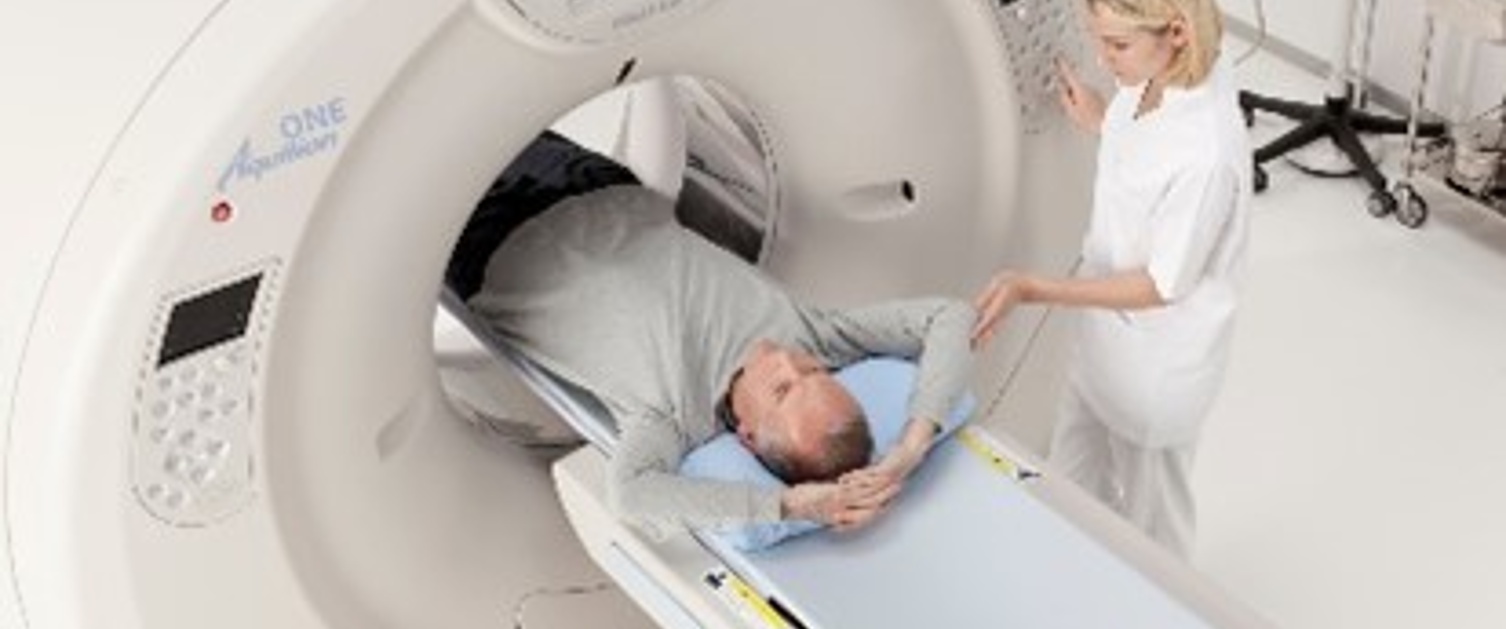CT Scan

What is it?
Liver disease has many causes, sometimes it can be caused by problems with the liver tissue being inflamed (e.g. Hepatitis), the blood supply to the liver being altered (e.g. Portal Vein Clots) or problems with the bile ducts (e.g. Primary Sclerosing Cholangitis).
You can also have abnormal areas in the liver such as cysts, patches of abnormal blood vessels (haemangioma) or growths in the liver such as liver cancer.
A CT scan takes many x-rays of a cross section of your abdomen to give us a detailed picture of the structures in this area, including your liver, spleen, pancreas and gallbladder.
What do I need it for?
There are lots of reasons we may wish to perform a CT scan.
We may use it as part of the diagnostic process, to see if there are any problems with the structure of the liver or bile ducts that can identify the cause of your liver disease. We may use this test to gain a diagnosis in combination with other imaging tests such as ultrasound or as a single test.
We may perform a CT scan if an ultrasound test is unsuccessful, is unable to view one or more of the areas of interest or identifies an area which needs more detailed pictures to find out what is causing the abnormality.
If you have a diagnosis of cirrhosis you are at higher risk of liver cancer known as Hepatocellular Carcinoma, we may wish to undertake surveillance if you are considered at high risk of this complication. In some cases it is felt best to undertake this monitoring by performing a regular CT scan.
How is it performed?
A CT scan takes place in the radiology department and is performed by a specialist known as a radiographer.
You may be asked to be “Nil by mouth” for a period of time before the study.
You will often be asked to change into a hospital gown as some clothing items can interfere with the test results.
Some CT scans require a dye (known as contrast) to be injected. This is usually done by inserting a tube, sometimes called a cannula, into one of your arm veins, which will be done before the test.
You will be asked to lie flat on the couch and keep still. You may be required to take deep breaths at certain points in the procedure, instructions will be relayed to you via a loud speaker in the room.
The scanner is shaped like a large donut and will pass over you several times during the procedure. If you are having a test requiring contrast dye, you will be told when the dye is due to be injected through the cannula, it can give you a strange warm sensation throughout the body but is not painful or unpleasant.
The test usually takes 5-10 minutes.
After the test there are no special instructions to follow, you can continue as normal.
How will I receive my results?
The x-ray images will be sent to a radiologist (a doctor specialising in these tests), who will review the images and create a report on the findings.
The report will be sent on to the doctor or nurse who requested your test, who will be able to interpret it along with the medical history, blood tests and any other results. No single test will diagnose the cause and extent of your liver disease.
In some cases we may not be able to get the required information from a CT scan. In this instance the information will be passed onto the doctor or nurse who requested the test for them to decide the best next steps.
Will I need repeated tests?
Depending on the underlying cause of your liver disease, you may be required to have further repeat CT scans. If you have cirrhosis or are considered high risk for developing liver cancer and ultrasound testing is not suitable, you may be asked to have a repeat scan every 6 months. You will be informed if this is the case.
What if I do not want the test?
A CT scan is a non-invasive test that is quick and can give us a good idea of the structure of your liver, however, it is your choice if you do not wish to have the test.
You should discuss alternative options with your doctor or nurse specialist, these may include other ways of taking images of the liver, blood test monitoring or a liver biopsy. Alternative options will depend on the cause of your liver disease and the reason for performing the test.